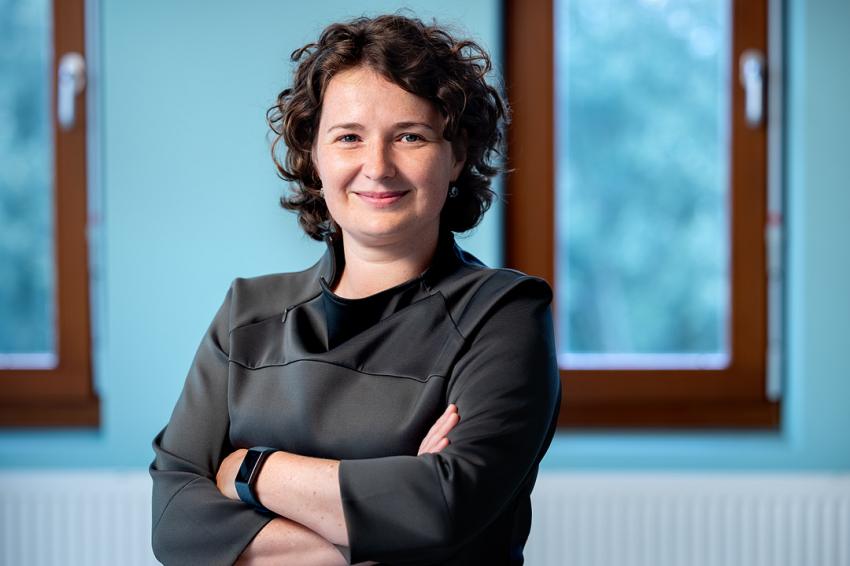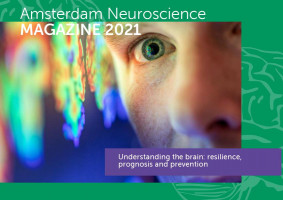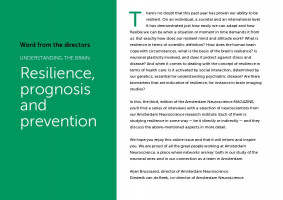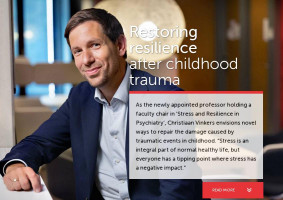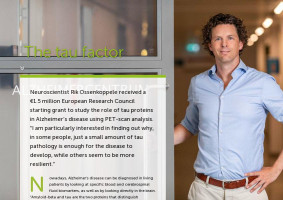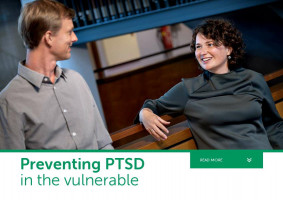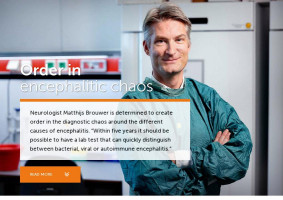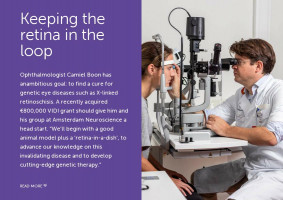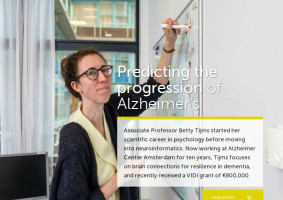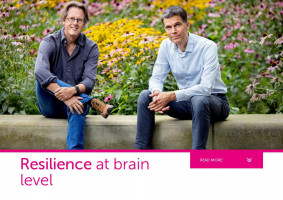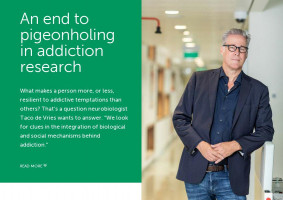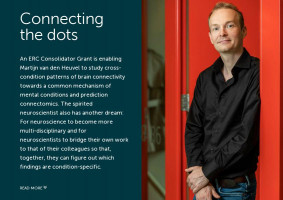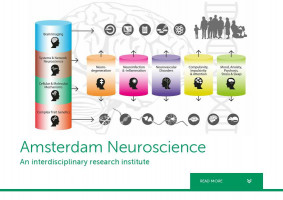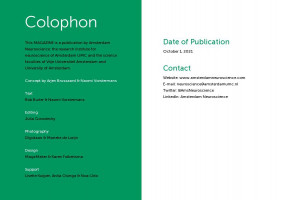
The blood and brain may hold visible clues for who is more vulnerable to post-traumatic stress disorder (PTSD) and who is more resilient to stressful situations. “Developing a predictive tool may enable us to take better preventive measures in individuals who are at risk of developing PTSD,” says neuropsychologist Mirjam van Zuiden.
Traumatic experiences are no rarities. Approximately eight out of every ten Westerners will experience some form of traumatic event during their life. Fortunately, 80% to 90% of the people who have a traumatic experience are resilient enough to cope with it. But, for example, 5% to 7% of all people involved in a serious car accident will develop PTSD. For victims of sexual abuse, this percentage is a lot higher. During her PhD-research, from 2007 to 2012 in Utrecht, neuropsychologist Mirjam van Zuiden looked at a group of 1,000 soldiers who were sent to Uruzgan, Afghanistan. “They had experienced numerous traumatic events,” she says. “Some had lost comrades during military operations; others had been shot at themselves. There was, however, a clear distinction within this thousand. Some developed PTSD, while others kept functioning relatively normally after their traumatic experiences.”
More receptors for stress-hormones
When looking at the soldiers’ blood values, which were determined before they were sent to Afghanistan, Van Zuiden was able to see a difference between the group that developed PTSD later and the resilient group. “On average, we saw that those with PTSD symptoms had higher levels of the receptors for glucocorticoids,” she explains. “We only looked at the receptors on white blood cells, assuming this reflects the number of receptors in the brain too. Moreover, we only saw a statistical difference on group-level, not in individuals. Nevertheless, this was a first indication that it may be possible to distinguish PTSD-vulnerable people from less vulnerable individuals, before a traumatic event may occur.”
Brain scans
Van Zuiden is now Assistant Professor in Psychiatry at Amsterdam UMC, where she continues her work on PTSD with, among others, Professor of Neuroimaging in Psychiatry, Guido van Wingen. “Mirjam has addressed a very important question in psychology and psychiatry,” says Van Wingen. “PTSD patients are clearly different from other individuals. But were they different to begin with, or have the traumatic experiences made them so?”
Building on the first blood data, Van Zuiden and Van Wingen added brain scans to the toolbox for the pre-Uruzgan soldiers. “With various imaging techniques, we looked at the way a brain processes emotions and cognitive tasks,” explains Van Wingen. “Moreover, we looked at the layout of the various ‘highways’ in the brain as a substitute for the complexity of the networks in a brain.”
Stronger network
After returning home, the soldiers were asked in a questionnaire how traumatic they had found their mission. “Overall, we saw that almost all of the soldiers’ brains were on ‘alert’ for a long time after they came back,” says Van Wingen. “The differences in their experiences afterwards were reflected by specific aspects of their brain layout which we saw beforehand. The perception of threat, in particular, changed the communication between the amygdala and the cingulate cortex, which are the brain’s alarm and control centers, respectively.
“A year and a half after returning home, the stress system of most of the soldiers’ brains had returned to a normal state. In those who had experienced their mission as traumatic, however, the communication between the amygdala and cingulate cortex was still altered. These were also the people who appeared vulnerable to PTSD.”
Individual risk profile
Having detected the average differences in groups that may or may not develop PTSD, the higher goal for Van Zuiden and Van Wingen is to establish an individual risk profile. “In a new project at the Emergency Room, we are measuring stress hormones and physiological markers of stress, such as heart rate, in people as soon after a traumatic event as possible,” says Van Zuiden. “With machine learning techniques, we are beginning to get a hold of individual risk profiles, based on the profiles of these stress markers.”
With these risk profiles, targeted therapy comes into the picture as well. “This is where artificial intelligence and machine learning has proven its value too,” says Van Wingen. “Treatments like Eye Movement Desensitization and Reprocessing may be very valuable, but not in all patients with PTSD. When we feed data from our brain scans into the computer and tell the machine for whom a particular therapy was effective or not, we can now correctly predict in eight out of ten patients what therapy will be effective.”
Preventive measures
Apart from targeted therapy for victims of PTSD, Van Zuiden stresses that individualized preventive measures are now becoming possible as well. “The infrastructure for psychiatric and psychological therapy in the Netherlands suffers from a serious treatment delay. Therefore, it’s undoubtably better to avoid putting people on the waiting list in the first place. Others in this research field have already had success with giving people cortisol in the first hours after trauma as a preventive measure of developing PTSD. This may sound counterintuitive, ‘stress hormones to prevent stress’, but it is hypothesized that ‘loading’ the receptors with a stress hormone early after trauma may augment a naturally existing negative feedback loop that normalizes the potential over-reaction of the stress system. We hope that, through these or other measures, it will be possible to lessen the burden of psychiatric disorders like PTSD and other disorders that may develop after trauma, such as depression. This will benefit both the individuals involved, as well as society as a whole.”
Photography: Digidaan

